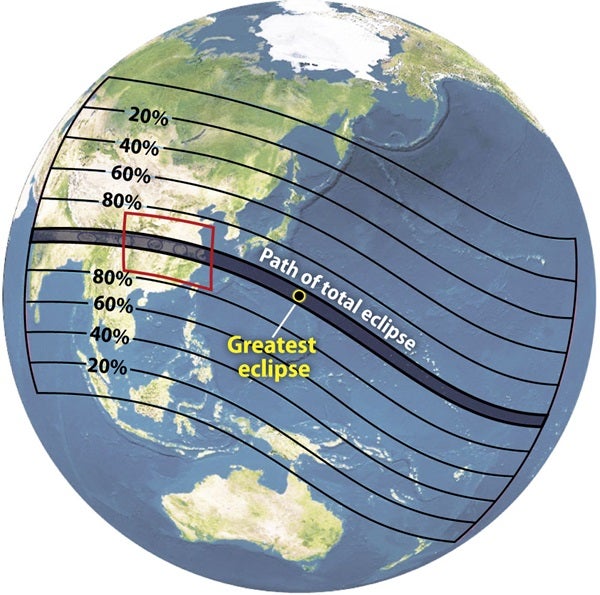
This article appeared in the July 2009 issue of Astronomy magazine
Like two cars speeding toward the same intersection in some action thriller, the Sun and Moon are racing relentlessly toward the same spot in the sky. But there will be no screeching brakes, twisted metal, or fiery explosion. When the two worlds reach their date with destiny, more than 94 million miles (151 million kilometers) of empty space will separate them. Neither will experience anything out of the ordinary.
The same won’t be true for Earth. When the Sun and Moon align July 22, 2009, a cone of darkness will cut a narrow course through eastern Asia and the western Pacific, turning day to night and rewarding anyone who stands in the path with a sight they’ll never forget.
The Moon’s dark void will block the Sun’s brilliant disk for several precious moments. Flaming-red solar prominences and ghostly coronal streamers will poke above the Moon’s pitch-black limb. The amazing show will last up to 6 minutes and 39 seconds, making this the longest total solar eclipse of the 21st century









